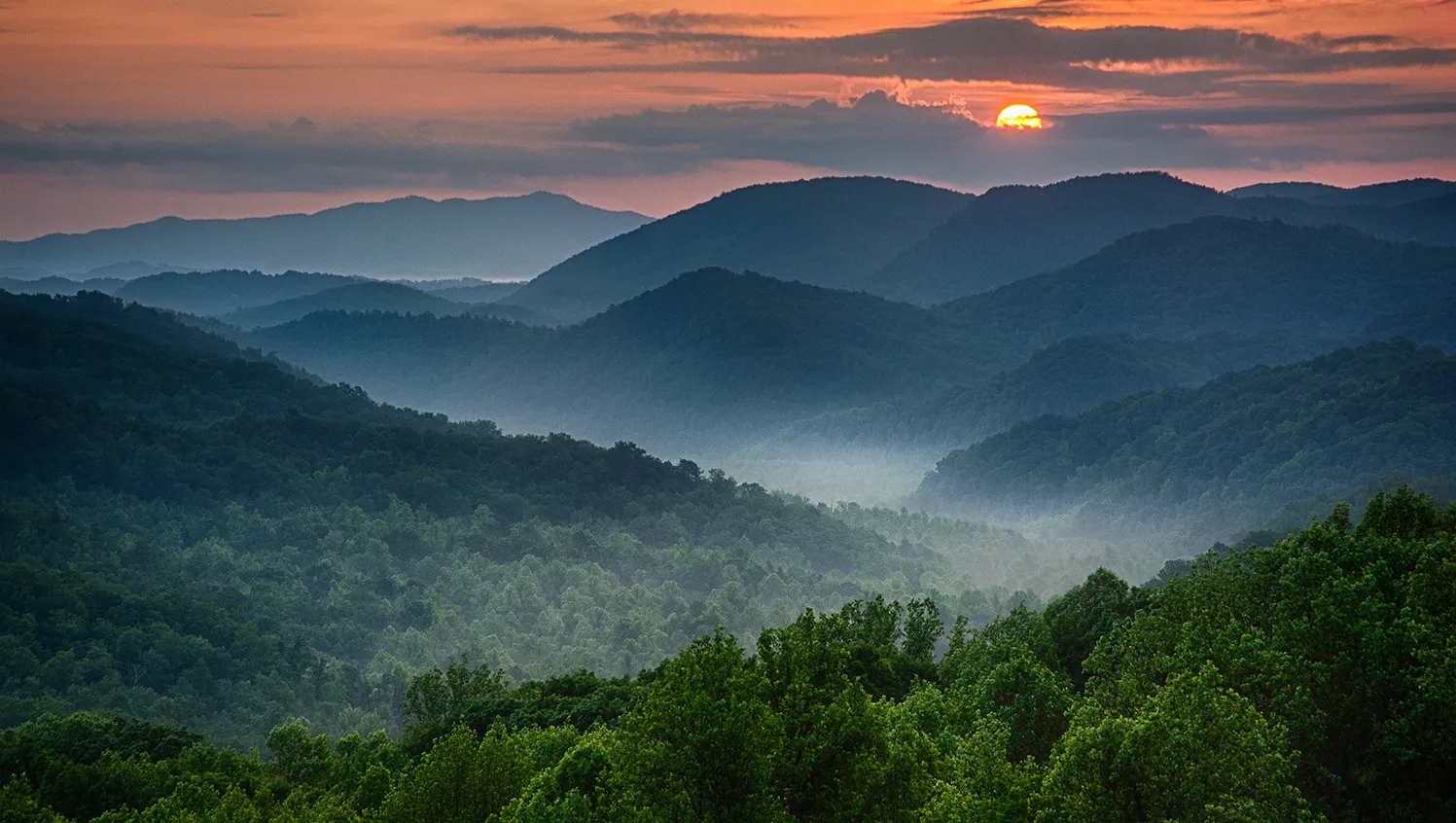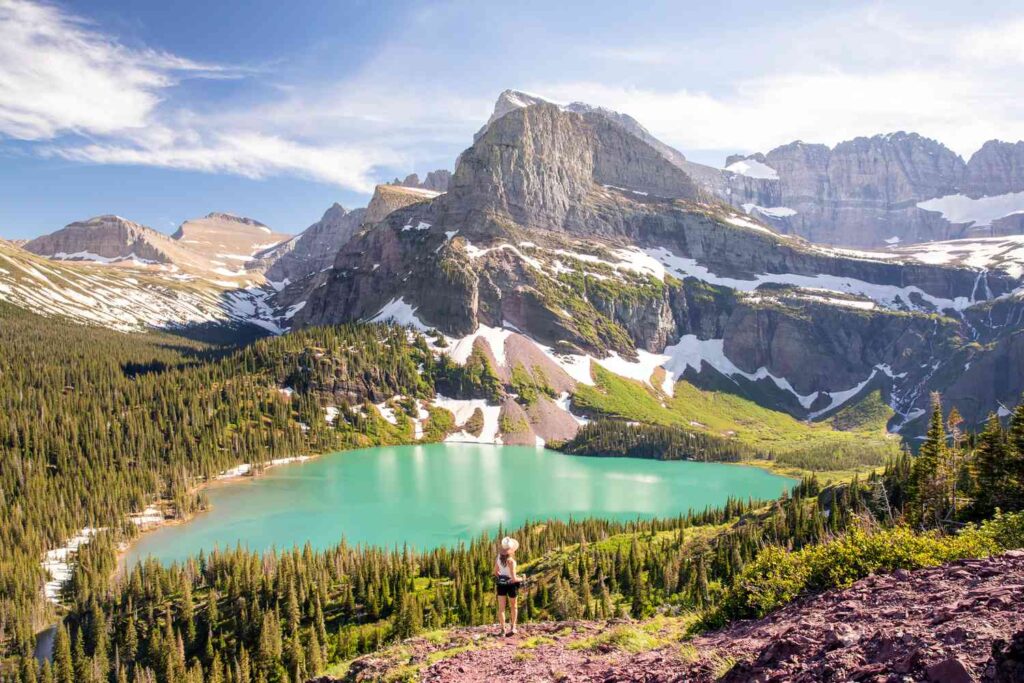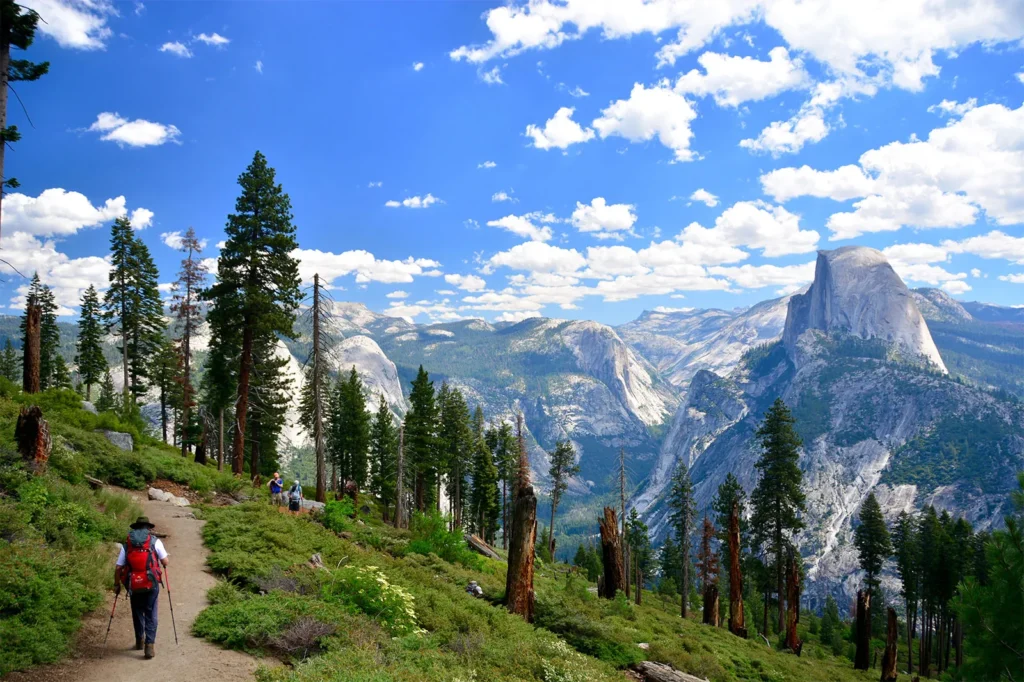The story of the Smoky Mountains dates back to ancient times, when colossal continents collided to form a mountain range that ranks among the oldest on Earth. Some of the rocks here were originally formed over a billion years ago at the bottom of a prehistoric sea, and were later pushed upward when the African tectonic plate collided with North America.
Human history in the region is equally ancient. Indigenous peoples have inhabited the Smoky Mountains area since prehistoric times, with archaeologists discovering hunting tools dating back 10,000 years and pottery from around 700 BCE. When European settlers arrived in the 1600s, they encountered the Cherokee people, who lived in villages along the river valleys. The Smokies were at the heart of Cherokee territory until they were forcibly removed on the Trail of Tears. In the early 20th century, lumber companies nearly devastated the forests, but fortunately, local visionaries fought to establish the park, which was officially created in 1934.
Today, Great Smoky Mountains National Park is the most visited national park in the United States. Its popularity is partly due to its convenient location near major metropolitan areas like North Carolina’s Research Triangle, Knoxville, Tennessee; Atlanta, Georgia; and Washington, DC. The park’s design, featuring a network of roads and hiking trails, appeals to a wide range of visitors—from casual nature lovers and history enthusiasts to experienced backpackers. Best of all, the park has no entrance fee or requirement for an America the Beautiful pass.
If you’re intrigued, we offer detailed information on the best times to visit, top sights, camping options, and must-do hikes in the Smokies. Whether it’s your first trip or you’re a frequent visitor, read on for all you need to know.
Hiking in Great Smoky Mountains National Park
The Smokies are part of the ancient Appalachian Mountain chain, which formed over 200 million years ago. These once towering peaks—possibly as high as the Himalayas—have been gradually worn down over time. Hiking to the summit of a 6,000-foot peak offers stunning views of endless ridges rolling off into the distance. The park boasts more than 800 miles of trails, ranging from short waterfall walks to multi-day treks.
Here are some top hiking highlights:
Clingmans Dome
As the park’s highest point, Clingmans Dome provides breathtaking 360-degree views from its unique circular observation platform. The paved half-mile trail to the tower is steep but manageable, and the area is crossed by several notable trails including the Appalachian Trail and Alum Cave Bluffs. In winter, when the access road is closed, the views become a quiet, solitary experience.The Appalachian Trail
This iconic 2,200-mile trail stretches across 14 states, with 71 miles running along the Smoky Mountains’ spine. Hikers encounter stunning overlooks, misty forests, and historic fire towers. Even if you can’t hike the entire trail, you can enjoy memorable day hikes or overnight trips along this legendary route.Mt LeConte
One of the park’s toughest yet most rewarding hikes leads to Mt LeConte, the third-highest peak at 6,593 feet. Multiple trails wind past rushing streams, waterfalls, and dramatic views before reaching a rustic mountaintop lodge that dates back to before the park’s founding. Reservations are essential to stay overnight.Alum Cave Bluffs
Among the park’s most popular trails, Alum Cave Bluffs offers a scenic hike featuring log bridges, old-growth forests, and unique rock formations. Highlights include Arch Rock, a stone archway with steep stone steps, and Inspiration Point, a vista overlooking the surrounding mountains. The trail continues beyond the bluffs to the summit of Mt LeConte.Ramsey Cascades
This challenging hike leads through ancient forests to the park’s highest waterfall, which drops 100 feet over rugged ledges. The trail climbs steadily with some steep sections, rewarding hikers with views of massive tulip trees and a refreshing waterfall at the end. Be cautious not to climb the falls themselves, and watch for camouflaged salamanders near the pool.
Camping in the Smokies
The park offers a variety of camping options. LeConte Lodge is the only place to stay overnight in a building, accessible only by hiking. The nearby town of Gatlinburg provides the most lodging options, though it can be expensive, while Pigeon Forge and Sevierville offer more affordable accommodations.
Within the park, nine developed campgrounds offer more than 900 sites with basic amenities like restrooms and picnic tables. Some campgrounds require advance reservations, especially popular ones like Cataloochee and Abrams Creek. Many sites are first-come, first-served, and a few campgrounds remain open year-round.
Backcountry camping is also available with a permit and a nightly fee for up to five nights. Permits can be reserved online or obtained at visitor centers.
Driving the Smoky Mountains
When the park was established, the idea of building scenic roads was debated. Some felt roads would intrude on nature, while others believed they would make the park more accessible. Today, roads remain a vital part of the visitor experience.
Newfound Gap Road is the park’s only paved highway crossing from Cherokee, NC, to Gatlinburg, TN. Though it can be driven quickly, it’s best enjoyed at a leisurely pace, stopping at overlooks, streams, and trailheads.
Other scenic drives include the 5.5-mile Roaring Fork Motor Nature Trail, which passes waterfalls, old forests, and historic homesteads, and the recently extended Foothills Parkway offering stunning mountain views.
More Things to Do
The Smokies shine in every season: spring’s wildflowers, summer’s vibrant azaleas, fall’s fiery foliage, and winter’s snowy serenity. This World Heritage Site also hosts the synchronized fireflies’ annual light show in late spring, drawing crowds to Elkmont Campground. Visitors can also enjoy wildlife watching in Cataloochee, where elk, turkeys, and bears roam.
For adventure seekers, rafting on the Pigeon River offers everything from gentle paddles to thrilling rapids. History buffs can explore Cades Cove’s preserved 19th-century buildings and abundant wildlife.
When to Visit
The park is open year-round, with summer and fall being the most popular due to lush blooms and colorful leaves. Spring brings wildflowers and reopening campgrounds, though nights can still be chilly. Winter offers a peaceful retreat, but some roads and facilities may close due to weather.








